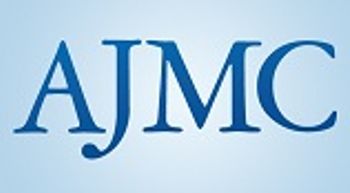
The American Journal of Managed Care publishes a first-of-its-kind study comparing different types of health insurance plans and different levels of co-payment, to see how varieties of coverage affect access to therapeutic drug classes.

The American Journal of Managed Care publishes a first-of-its-kind study comparing different types of health insurance plans and different levels of co-payment, to see how varieties of coverage affect access to therapeutic drug classes.

Despite a growing number of people becoming insured in 2014, attitudes have not shifted about the Affordable Care Act.

Among surprises from a new study on U.S. health spending is the realization: Whether insured or not, young adults spent about the same on out-of-pocket health expenditures throughout the year.

In the opening presentation of the National Association of Managed Care Physicians' Spring Managed Care Forum 2014 in Orlando, entitled Are You Ready for Value-Based Payment, Christopher Kalkhof, FACHE, and Amol Navathe, MD, discussed their work assisting healthcare organizations to optimally strive for sustainable business models that will prevent margin erosion during a time when the population of healthcare consumers is increasingly aging and using more resources associated with chronic disease and end-of-life treatments.

Providers and insurers alike know that focusing on quality and cost will be essential, especially as healthcare shifts toward accountable care models.

Despite enrollment deadline extensions and expansion of the federal poverty guidelines, many uninsured Americans are choosing not to obtain health plans on insurance exchanges.

The expenses associated with cancer care in the United States are staggering and only expected to climb.


While lawmakers initially had intended to have each state run its own health insurance exchange, only 16 states and Washington, DC, have opted to do so. Many now wonder if the remaining states will establish their own exchange, as the November deadline to receive federal grant funding approaches, or if they will simply default to utilizing a federally-run exchange.

Nearly 2 million Californians have gained coverage with the expansion of the Medi-Cal program for poor and disabled people, including those who transitioned from temporary programs like Healthy Way LA. But roughly 800,000 more applications are pending from people presumed to be eligible for the program.

A poll of uninsured people in December found that of those who did not plan to get coverage, half said that cost was the main reason. Nearly 3 in 10 said they objected to the government's requiring it, while about one in 10 said they felt they did not need it.

President Obama's health law has led to an even greater increase in health coverage than previously estimated, according to new Gallup survey data, which suggest that about 12 million previously uninsured Americans have gained coverage since last fall.

As the structure of the healthcare system changes rapidly, patient-reported outcomes provide clinicians with a different set of tools for promoting health.

Want to know how many people have signed up for private insurance under Obamacare? Like the health care law itself, the answer is exceedingly complicated.

Even as the cost of prescription drugs has plummeted for many Americans, a small slice of the population is being asked to shoulder more and more of the cost of expensive treatments for diseases like cancer and hepatitis C, according to a report to be released on Tuesday by a major drug research firm.

The Obama administration's timeline for having ready the new healthcare law's online sign-up system "was just flat out wrong," outgoing Health and Human Services Secretary Kathleen Sebelius said in an interview that aired Sunday.

With the Affordable Care Act's open enrollment period now closed, perhaps there is an opportunity for constructive, bipartisan policy discussion on health care reform.

As hundreds of thousands of diabetics get health coverage under the federal law, insurance companies are aggressively targeting this glut of new patients, who are expensive to treat and often lax in taking medications and following their diet.

Exchange enrollment numbers recently topped 7 million people this past week, which means insurance companies across the United States are already predicting a hefty increase to consumers' 2015 health plan premiums.

The duals demonstration project launched last week in five counties, according to officials from the Department of Health Care Services, which is overseeing the project.

Health insurers often try to influence Washington through quiet persuasion in plush offices. To fight potential government cuts for private Medicare plans, however, they've hit the streets.

Patient access to some of the nation's best-known cancer-care centers could become a flashpoint in the simmering controversy surrounding the narrow networks being constructed by some insurers and healthcare providers.

With 2015 Medicare Advantage payment rates and policy changes pending, some lawmakers and associations are urging the Centers for Medicare & Medicaid Services to stick to the cut it proposed while others are calling for rates not to drop.

As retail clinics plan to have a role in improving health outcomes, they must achieve the 3 components of the triple aim: access, quality, and cost.

Two Republicans dueled over Medicaid this morning, as the Senate's foremost opponent of expansion accused another senator of taking the "easy" route in rolling out a plan that would increase coverage.

259 Prospect Plains Rd, Bldg H
Cranbury, NJ 08512
© 2025 MJH Life Sciences®
All rights reserved.
